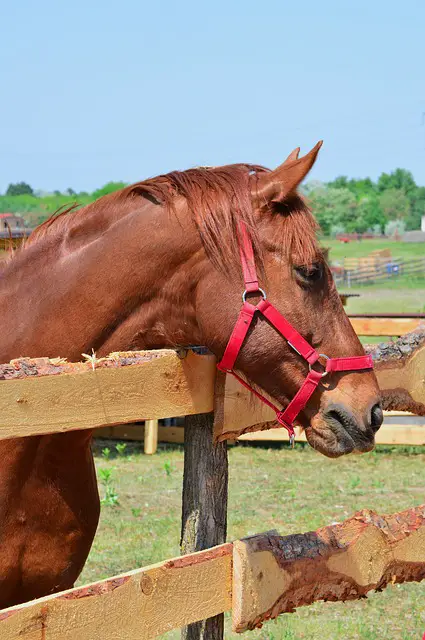Last Updated on March 31, 2022 by Allison Price
The placenta connects the foal and mare, and is vital. It supplies oxygen and nutrients to the foal through various blood vessels and interconnections with the mare.
The mare’s endometrium (the lining of her uterus) is where the placenta attaches. Many tiny projections, shaped like fingers, are found in the endometrium. These connect with the placenta and increase the area available for the transfer oxygen and nutrients to the foal.
These interconnections can be damaged and called placentitis (infection of the placenta). Placentitis can cause problems in the foal’s development and growth by interfering with the flow of nutrients and oxygen to them.
Examining the Placenta
It is important to examine the placenta in an ‘F” shape. The horns and uterine body should be flattened.
This arrangement gives you a great opportunity to inspect the blood vessels and make sure they are normal. You should check both sides.
Turn the placenta inwardly to inspect the inside. Place it again in an “F” shape.

The cervical star is the area of the placenta that the foal left. There should be a hole here, which indicates where it kicked its way out. Placentitis can be detected if the placenta has a uniform colour throughout. Ascending infections usually start from the outside and work up. It is important to begin at the cervical end, and then move upwards.
Next, let’s take a look at the horns. The horn at the top will be smaller than that of the lower horn. The foal was held by the lower horn. It is important that you check the placenta to make sure the tip of non-pregnant’s horn is intact. This is the most common part to be left in the mare.
When is a Placenta considered Retained?
Placenta should be removed within three hours of foaling. The mare must pass the placenta within three hours of foaling. We recommend you seek veterinary advice.
What is the Equine Placenta Examination Checklist
- You should inspect the placenta, from head to tail. Make sure that both horns and the tip of the non-pregnant horn are visible.
- Make sure that all areas of the placenta are the same colour.
- Check both the sides and the inside of the placenta by turning it over.
- This is not meant to replace a foal check. Within the first 36 hours, a vet should still visit and inspect the foal.

